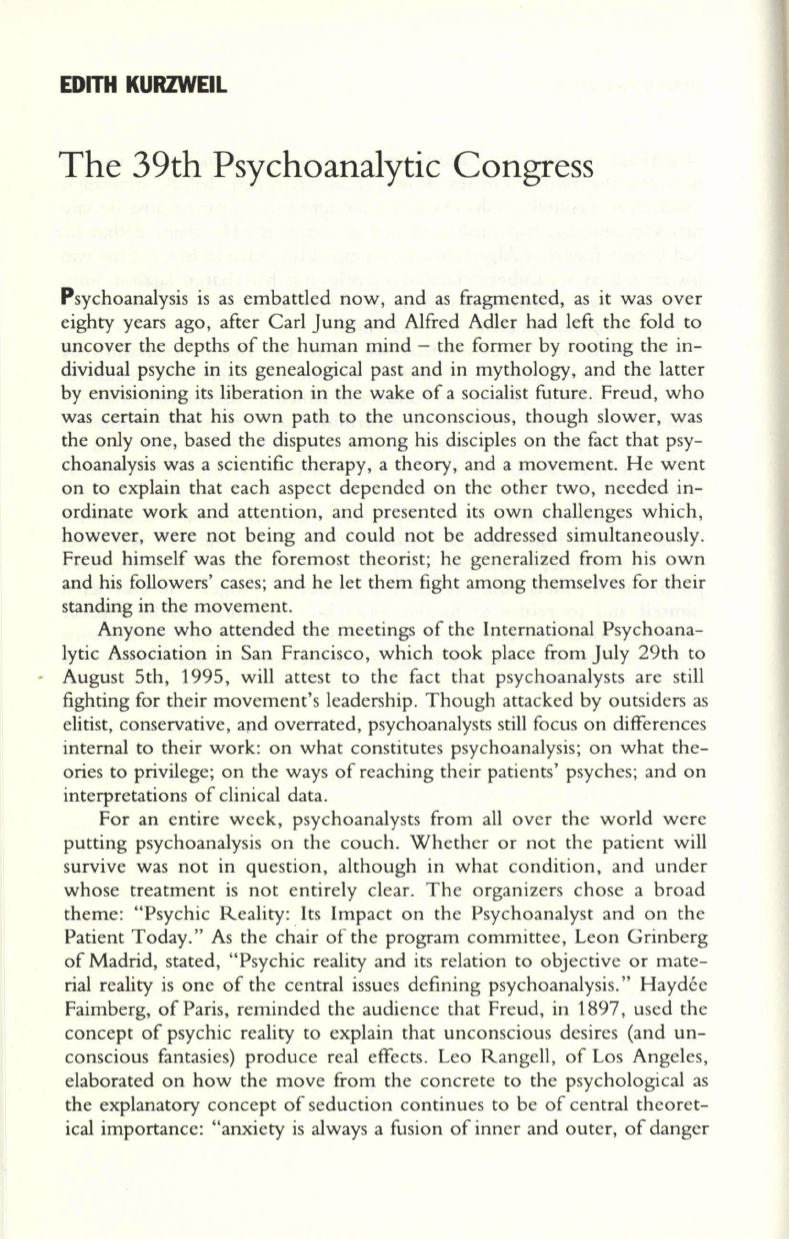
EDITH KURZWEIL
The 39th Psychoanalytic Congress
P sychoanalysis is as embattled now, and as fragmented, as it was over
eighty years ago, after Carl Jung and Alfred Adler had left the fold to
uncover the depths of the human mind - the former by rooting the in–
dividual psyche in its genealogical past and in mythology, and the latter
by envisioning its liberation in the wake of a socialist future. Freud, who
was certain that his own path to the unconscious, though slower, was
the only one, based the disputes among his disciples on the fact that psy–
choanalysis was a scientific therapy, a theory, and a movement. He went
on to explain that each aspect depended on the other two, needed in–
ordinate work and attention, and presented its own challenges which,
however, were not being and could not be addressed simultaneously.
Freud himself was the foremost theorist; he generalized from his own
and his followers' cases; and he let them fight among themselves for their
standing in the movement.
Anyone who attended the meetings of the International Psychoana–
lytic Association in San Francisco, which took place from July 29th to
- August 5th, 1995, will attest to the fact that psychoanalysts are still
fighting for their movement's leadership. Though attacked by outsiders as
elitist, conservative, and overrated, psychoanalysts still focus on differences
internal to their work: on what constitutes psychoanalysis; on what the–
ories to privilege; on the ways of reaching their patients' psyches; and on
interpretations of clinical data.
For an entire week, psychoanalysts from all over the world were
putting psychoanalysis on the couch. Whether or not the patient will
survive was not in question, although in what condition, and under
whose treatment is not entirely clear. The organizers chose a broad
theme: "Psychic Reality: . Its Impact on the Psychoanalyst and on the
Patient Today." As the chair of the program committee, Leon Grinberg
of Madrid, stated, "Psychic reality and its relation to objective or mate–
rial reality is one of the central issues defining psychoanalysis." Haydee
Faimberg, of Paris, reminded the audience that Freud, in 1897, used the
concept of psychic reality to explain that unconscious desires (and un–
conscious fantasies) produce real effects. Leo Rangell, of Los Angeles,
elaborated on how the move from the concrete to the psychological as
the explanatory concept of seduction continues to be of central theoret–
ical importance: "anxiety is always a fusion of inner and outer, of danger


